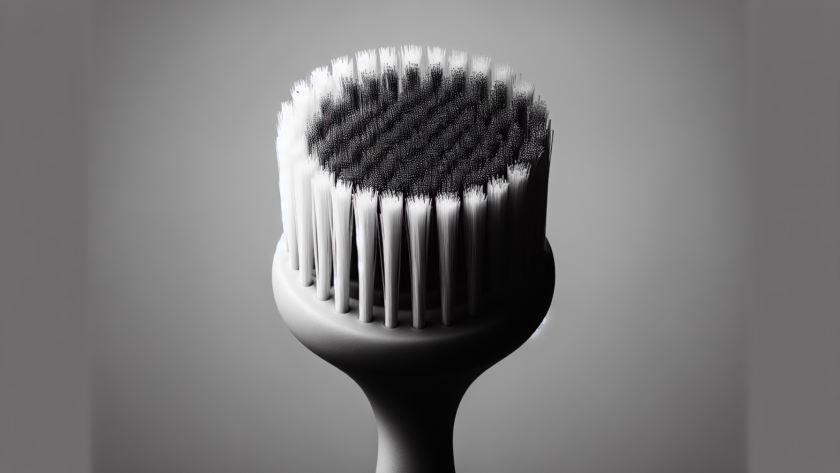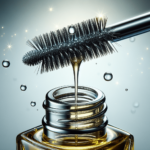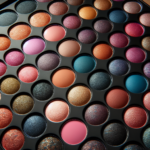Exfoliating your face is a crucial step in your skincare routine, but do you know how to do it effectively? This article will guide you through the process of exfoliating your face, from understanding the benefits to finding the right exfoliator for your skin type. Discover simple yet powerful techniques that will leave your skin feeling rejuvenated and glowing. Say goodbye to dull and lifeless skin, and say hello to a refreshed and radiant complexion. Let’s dive into the world of exfoliation and unlock the secrets of vibrant and healthy skin.
Choosing the Right Exfoliator
Exfoliating your face is an important step in any skincare routine. It helps to remove dead skin cells, unclog pores, and leave your skin looking smooth and radiant. But with so many exfoliators to choose from, how do you know which one is right for you? The first step is to identify your skin type. Whether you have dry, oily, or sensitive skin, there’s an exfoliator out there that’s perfect for you.
Identify your skin type
Knowing your skin type is essential when it comes to choosing the right exfoliator. If you have dry skin, you’ll want to look for gentle exfoliators that won’t strip away too much moisture. For oily skin, opt for exfoliators with ingredients like salicylic acid that can help control excess oil production. Those with sensitive skin should choose mild exfoliators that won’t cause irritation.
Consider your skin concerns
In addition to your skin type, it’s also important to consider any specific skin concerns you may have. If you’re prone to acne, look for exfoliators that contain ingredients like benzoyl peroxide or glycolic acid, which can help to unclog pores and prevent breakouts. If you have hyperpigmentation or dark spots, consider exfoliators with brightening ingredients like vitamin C or kojic acid.
Research different types of exfoliators
There are two main types of exfoliators: physical exfoliators and chemical exfoliators. Physical exfoliators, also known as manual exfoliators, contain small particles or granules that physically scrub away dead skin cells. Chemical exfoliators, on the other hand, use ingredients like alpha-hydroxy acids (AHAs) or beta-hydroxy acids (BHAs) to dissolve dead skin cells. Take the time to research different exfoliators and their ingredients to find the one that best suits your needs.
Preparing Your Face for Exfoliation
Before you begin the exfoliation process, it’s important to prepare your face properly. This will help to ensure that your skin is clean and ready for the exfoliation treatment.
Cleanse your face
Start by cleansing your face with a gentle cleanser to remove any dirt, oil, or makeup. This will help to create a clean canvas for exfoliation and allow the exfoliator to better penetrate your skin. Be sure to rinse thoroughly and pat your face dry with a clean towel.
Steam your face
Steaming your face before exfoliation can help to open up your pores and make the exfoliation process more effective. Fill a bowl with hot water and lean over it, covering your head with a towel to trap the steam. Allow the steam to penetrate your skin for about 5-10 minutes before moving on to the next step.
Performing the Exfoliation
Now that your face is properly prepared, it’s time to exfoliate! Follow these steps to ensure a successful exfoliation:
Apply the exfoliator
Take a small amount of your chosen exfoliator and gently massage it onto your damp skin. Start with your forehead and work your way down to your chin, using upward circular motions. Be sure to avoid the delicate skin around your eyes.
Use gentle circular motions
When exfoliating, it’s important to use gentle circular motions rather than harsh scrubbing. Applying too much pressure can irritate the skin and cause redness or inflammation. So, be gentle and let the exfoliator do the work for you.
Pay attention to sensitive areas
Certain areas of your face, such as your nose or chin, may be more prone to dryness or sensitivity. Take extra care when exfoliating these areas, using lighter pressure or opting for a gentler exfoliator.
Avoid exfoliating around the eyes
The skin around your eyes is thin and delicate, so it’s best to avoid exfoliating this area altogether. Instead, focus on exfoliating the rest of your face and use a separate eye cream or gel designed specifically for the eye area.
Be cautious with physical exfoliants
If you’re using a physical exfoliant, be cautious not to overdo it. These exfoliators can be more abrasive and may cause irritation if used too frequently or aggressively. Use them sparingly and follow the instructions on the product packaging.
Massage for a few minutes
Take the time to massage the exfoliator into your skin for a few minutes. This will help to further slough away dead skin cells and improve circulation. Enjoy this step as a mini spa-like treatment for your skin.
Rinse your face with warm water
Once you’re done massaging, rinse your face thoroughly with warm water. This will help to remove any residue from the exfoliator and leave your skin feeling fresh and clean. Pat your face dry with a clean towel.
Frequency of Exfoliation
Now that you know how to exfoliate your face, let’s talk about how often you should do it. The frequency of exfoliation depends on your skin type and how it reacts to the exfoliating treatment.
Consider your skin type
If you have dry or sensitive skin, it’s best to exfoliate no more than once or twice a week. Over-exfoliation can strip away the skin’s natural oils and cause dryness or irritation. On the other hand, if you have oily or acne-prone skin, you may be able to exfoliate more frequently, up to three times a week.
Start with once a week
If you’re new to exfoliating, it’s always a good idea to start slow. Begin by exfoliating once a week and monitor how your skin responds. If you notice any signs of dryness, redness, or irritation, scale back the frequency of exfoliation.
Adjust based on skin response
Pay attention to your skin’s needs and adjust the frequency of exfoliation accordingly. If your skin is looking dull or congested, you may need to exfoliate more often. Conversely, if your skin feels tight or sensitive, it’s a sign that you’re exfoliating too frequently and should dial it back.
Post-Exfoliation Care
After exfoliating, it’s important to take some post-care steps to ensure your skin stays healthy and well-nourished.
Moisturize your face
Exfoliation can sometimes leave your skin feeling dry or tight, so it’s essential to moisturize afterward. Choose a moisturizer that is suitable for your skin type and apply it generously to lock in hydration. This will help to restore moisture to your skin and keep it soft and supple.
Apply sunscreen
Exfoliating can make your skin more sensitive to the sun’s harmful rays, so it’s crucial to protect your skin with sunscreen. Apply a broad-spectrum sunscreen with a minimum SPF of 30 to shield your skin from UVA and UVB rays. Make sure to reapply throughout the day, especially if you’re spending time outdoors.
Avoid harsh skincare products
In the days following exfoliation, it’s important to be gentle with your skin. Avoid using harsh skincare products, such as those containing alcohol or strong fragrances, as they can further irritate or dry out your skin. Stick to gentle, nourishing products that will help to soothe and hydrate your skin.
Potential Side Effects and Precautions
While exfoliating can have many benefits for your skin, it’s important to be mindful of potential side effects and take necessary precautions.
Be mindful of over-exfoliation
Over-exfoliating can lead to skin damage and compromise your skin’s natural barrier. Signs of over-exfoliation include excessive dryness, redness, or increased sensitivity. If you experience any of these symptoms, give your skin a break from exfoliation and allow it to recover.
Discontinue if experiencing irritation
If you’re experiencing persistent irritation or discomfort after exfoliating, it’s best to discontinue use of the exfoliator. Everyone’s skin is different, and what works for one person may not work for another. Listen to your skin and switch to a milder exfoliator if needed.
Consult a dermatologist if necessary
If you have any concerns or questions about exfoliation, it’s always a good idea to consult a dermatologist. They can provide personalized advice based on your specific skin type and concerns. They can also recommend specific products or treatments that may be beneficial for you.
Patch test new exfoliators
Before using a new exfoliator, especially if it contains potent ingredients, it’s important to patch test it first. Apply a small amount of the product to a small area of your skin, such as your inner forearm, and wait 24 hours to see if any adverse reactions occur. If you don’t experience any redness, itching, or irritation, then it should be safe to use on your face.
Choosing the Right Exfoliating Tools
When it comes to exfoliating your face, there are a variety of tools available to enhance the exfoliation process. Here are some factors to consider when choosing the right tools for you:
Consider your preference
Some people prefer using their hands to exfoliate, while others prefer using tools. Consider your personal preference and what feels most comfortable for you. Remember, it’s about finding a method that you enjoy and will stick to.
Explore different types of tools
There are many different exfoliating tools on the market, such as facial brushes, cleansing sponges, or exfoliating gloves. Each tool has its own benefits and may work better for certain skin types or concerns. Do some research and try out different tools to see which one works best for you.
Take skin sensitivity into account
If you have sensitive skin, it’s important to choose gentle exfoliating tools that won’t cause irritation or redness. Look for tools made with soft bristles or gentle materials that will be kind to your skin. Always prioritize your skin’s health and comfort when selecting exfoliating tools.
Natural and DIY Exfoliation Methods
If you prefer a more natural approach to skincare or want to save some money, there are several gentle and effective DIY exfoliation methods you can try.
Consider gentle ingredients
Many ingredients found in your kitchen can be used as natural exfoliators. For example, a mixture of sugar and honey can make a gentle exfoliating scrub. Oatmeal, blended into a fine powder, can also be a fantastic natural exfoliant for sensitive skin. Be sure to do thorough research on which ingredients suit your skin type before trying them out.
Experiment with homemade recipes
If you enjoy getting creative in the kitchen, why not experiment with making your own exfoliating recipes? From avocado and banana masks to coffee ground scrubs, there are plenty of DIY recipes available online. Have fun and find the perfect homemade exfoliator that suits your skin’s needs.
Professional Exfoliation Options
For those who want to take their exfoliation routine to the next level, there are professional treatment options available. Here are a few options to consider:
Research professional treatments
Professional treatments, such as chemical peels or microdermabrasion, can provide a more intensive exfoliation experience. Chemical peels involve applying a customized blend of chemical solutions to the skin, while microdermabrasion uses a machine to exfoliate and remove dead skin cells. Research these treatments and consult with a skincare professional to determine if they are suitable for your skin type and concerns.
Consult with a dermatologist
Before undergoing any professional exfoliation treatment, it’s essential to consult with a dermatologist. They can assess your skin and recommend the best treatment options based on your specific needs. They can also provide guidance on the frequency and aftercare required for these treatments.
Discuss potential benefits and risks
During your consultation, discuss the potential benefits and risks associated with professional exfoliation treatments. While these treatments can yield impressive results, they may not be suitable for everyone. Your dermatologist can help you weigh the pros and cons and make an informed decision that aligns with your skincare goals.
Conclusion
Exfoliating your face is a key step in achieving smoother, brighter, and healthier-looking skin. By choosing the right exfoliator, preparing your face properly, and following the correct techniques, you can enjoy the numerous benefits exfoliation has to offer. Remember to personalize your exfoliation routine based on your skin type and concerns, and always listen to your skin’s needs. With a little care and attention, you can have the glowing complexion you’ve always dreamed of.




